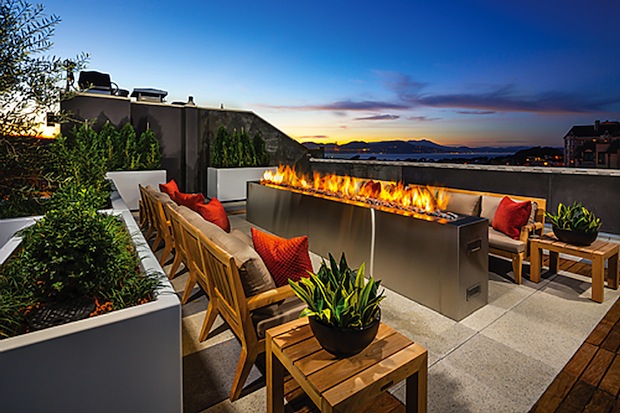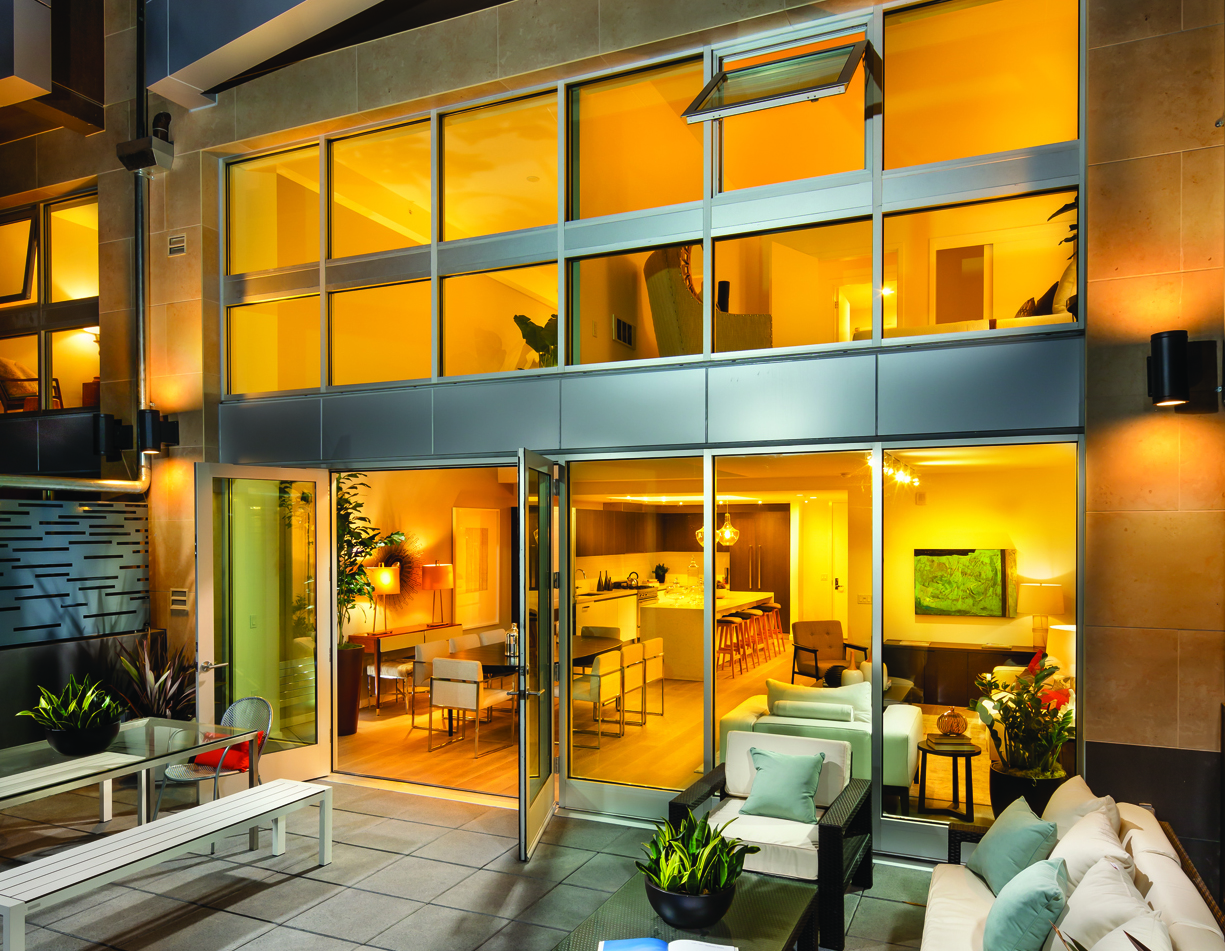For the past few years, several production and semi-custom home builders have ventured outside of their for-sale comfort zones to engage in construction for rental customers.
Toll Brothers, the industry’s 13th-largest builder, told analysts in October that it had plans for five joint-venture projects to build a total of 1,900 rental apartment units, and had another 2,500 apartments already in its production pipeline. The builder’s City Living division has a number of mid- and high-rise rental buildings either operating or under construction in New York, Philadelphia, and Washington D.C.
CEO Doug Yearley said Toll Brothers would contribute one-quarter of the total equity for the JVs. He referred to rental as a market “hedge” that is synergistic with Toll’s core business model.
For more on the multifamily housing sector, read BD+C's Special Report: "5 intriguing trends to track in the multifamily housing game"
In 2012-13, Lennar, the industry’s second-largest builder, launched Lennar Multifamily. Through August 31, this division had completed 19 rental communities, with another 16 under construction. Lennar uses third-party property managers to lease and manage its apartments.
These and other builders—notably Arbor Custom Homes in the Pacific Northwest, and Sares-Regis Group and MBK Homes in California—have delved deeper into metro areas facing severe shortages of rental units. In San Francisco alone, 90% of the 7,000 residential units under construction are rentals.
It’s important to note, however, that the majority of production builders with townhouses and condos in their portfolios still target buyers, not renters. One of these is San Francisco-based Trumark Urban, a division of Trumark Homes. As of late October, Trumark Urban had nine for-sale condo projects with 1,000 units in the works, seven of them in its hometown. Its total investment in these projects: $700 million.
 Unlike other production builders that have dipped their toes in the apartment arena, Trumark has stuck with for-sale condos, and has nine such projects in development in California. Photo: ©Christopher Mayer Photography
Unlike other production builders that have dipped their toes in the apartment arena, Trumark has stuck with for-sale condos, and has nine such projects in development in California. Photo: ©Christopher Mayer Photography
Arden Hearing, Trumark Urban’s Managing Director, says condo customers run the gamut from Millennials to empty nesters and age groups in between––“anyone who values the urban fabric.”
For Amero, which broke ground in San Francisco in November 2013, Trumark Urban offered two- and three-bedroom condos from 1,000 to 2,500 sf, selling at $1,100 to $2,000 per sf. Amero offers what Hearing says is a world-class roof deck. There’s a bike-parking space for every tenant, and a bike shop that’s managed by the homeowners’ association.
Hearing says the firm can be selective about what amenities it offers in San Francisco because the neighborhood itself is the biggest amenity. “It’s transit oriented and walkable,” he says. “I bet there are 15 bars within a short walk of Amero.” No need for an on-site gym either: there are numerous fitness centers close by.
Trumark’s projects in Los Angeles, however, have more extensive on-premises amenities. A 150-unit downtown building, three blocks from the Staples Center, has a 6,000-sf pool deck with grilling, private rooms, and yoga studios.
Hearing says his company has avoided marketing its condos as “luxury” in San Francisco, “where that’s a four-letter word.” But that label might be unavoidable for a $150 million, 77-unit condo project that Trumark broke ground on in October in San Francisco’s toney Pacific Heights neighborhood.
Trumark Urban is currently looking for opportunities in Seattle, San Diego, and international markets. “We want to go where people want to live,” says Hearing.
Related Stories
Transit Facilities | Dec 4, 2023
6 guideposts for cities to create equitable transit-oriented developments
Austin, Texas, has developed an ETOD Policy Toolkit Study to make transit-oriented developments more equitable for current and future residents and businesses.
Multifamily Housing | Nov 30, 2023
A lasting housing impact: Gen-Z redefines multifamily living
Nathan Casteel, Design Leader, DLR Group, details what sets an apartment community apart for younger generations.
Products and Materials | Nov 30, 2023
Top building products for November 2023
BD+C Editors break down 15 of the top building products this month, from horizontal sliding windows to discreet indoor air infusers.
Engineers | Nov 27, 2023
Kimley-Horn eliminates the guesswork of electric vehicle charger site selection
Private businesses and governments can now choose their new electric vehicle (EV) charger locations with data-driven precision. Kimley-Horn, the national engineering, planning, and design consulting firm, today launched TREDLite EV, a cloud-based tool that helps organizations develop and optimize their EV charger deployment strategies based on the organization’s unique priorities.
MFPRO+ Blog | Nov 27, 2023
7 ways multifamily designers can promote wellness in urban communities
Shepley Bulfinch's Natalie Shutt-Banks, AIA, identifies design elements that multifamily developers can use to maximize space while creating a positive impact on residents and the planet
MFPRO+ New Projects | Nov 21, 2023
An 'eco-obsessed' multifamily housing project takes advantage of downtown Austin’s small lots
In downtown Austin, Tex., architecture firm McKinney York says it built Capitol Quarters to be “eco-obsessed, not just eco-minded.” With airtight walls, better insulation, and super-efficient VRF (variable refrigerant flow) systems, Capitol Quarters uses 30% less energy than other living spaces in Austin, according to a statement from McKinney York.
MFPRO+ News | Nov 21, 2023
California building electrification laws could prompt more evictions and rent increases
California laws requiring apartment owners to ditch appliances that use fossil fuels could prompt more evictions and rent increases in the state, according to a report from the nonprofit Strategic Actions for a Just Economy. The law could spur more evictions if landlords undertake major renovations to comply with the electrification rule.
MFPRO+ News | Nov 21, 2023
Underused strip malls offer great potential for conversions to residential use
Replacing moribund strip malls with multifamily housing could make a notable dent in the housing shortage and revitalize under-used properties across the country, according to a report from housing nonprofit Enterprise Community Partners.
MFPRO+ News | Nov 21, 2023
Renters value amenities that support a mobile, connected lifestyle
Multifamily renters prioritize features and amenities that reflect a mobile, connected lifestyle, according to the National Multifamily Housing Council (NMHC) and Grace Hill 2024 Renter Preferences Survey.
Sustainability | Nov 20, 2023
8 strategies for multifamily passive house design projects
Stantec's Brett Lambert, Principal of Architecture and Passive House Certified Consultant, uses the Northland Newton Development project to guide designers with eight tips for designing multifamily passive house projects.

















